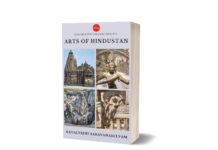There may be hundreds of architectural masterpieces around the world but Meenakshi Amman Temple of Madurai enjoys a special mention for its antiquity and popularity all over the world. Meenakshi is a manifestation of Goddess Parvati and is believed to have been blessed with beautiful eyes like a fish. She is the presiding deity of this grand architectural wonder.
The temple complex is located in the centre of the town and is easily accessible to travellers as well as local devotees. It takes about eight hours by car from Chennai airport to reach the temple town of Madurai. The foreign tourists visit this Hindu temple of Mother Goddess solely due to its architectural grandeur. It is indeed the pride of South India.
Scholars opine that it was built by a king of Pandyan dynasty. It is believed that King Kulasekara Pandya constructed it in 6th century B.C. The temple is approximately 2,500 years old. As per the legends, the king Malayadwaja Pandya was blessed with a daughter having three breasts much to his dismay. He was concerned about his daughter’s physical deformity. Later in life when the princess met Lord Shiva, the love of her life, her third breast disappeared and she turned into a beautiful maiden. Lord Shiva appeared to her in the form of Sundareshwara which means the handsome one. Lord Vishnu himself attended their wedding and blessed the couple.
A particular sculpture inside the sanctum attracts singular attention of the visitors as it is directly based on the mythological tale of marriage of Meenakshi with Sundareshwara. In the sculpture Lord Vishnu as Goddess Parvati’s brother is seen giving her in marriage to Lord Shiva. It is a wonderful piece of art and is symbolical of the peaceful relationship among various sects of Hinduism, namely Shaivism, Vaishnavism and Shaktism. The marriage ceremony is still celebrated with splendour every year as Chithirai Thiruvizha in the temple.
The temple houses a hall of thousand pillars. Each pillar has unique engravings related to Gods and Goddess. Each speaks of a mythological tale unknown to many. This hall of pillars was once used as a dancing space during religious ceremonies. Now, it harbours paintings and sculptures, serving the purpose of a museum.
Most remarkable feature of the temple is the entrance gates. They are huge towers known as gopuras. There are fourteen gateways leading to the two main shrines of the temple complex. One is known as the abode of Goddess Meenakshi and another shrine is dedicated to Lord Sundareshwara. Each gopura or tower is intricately designed and sculptured. They are covered with brilliant paintings and bright stucco figures. Stucco is a type of plaster that was used to build these wonderful temple sculptures that remained undamaged through centuries. The statues that are carved on the wall have direct mythological origin. The scene of Shiva-Parvati’s wedding is repeatedly carved on the walls of the gopuras. Additionally, sculpture of Nataraja, the dancing Shiva performing Tandav, is a prominent piece of art. Figures of Mother Goddess with ten hands killing the demon, similar to the Goodess Durga, are sculptured repetitively. The sculpture of the Goddess in all her power is symbolic of the importance of a woman in a South Indian Hindu family. Lord Murugan or Lord Kartikeya, the son born out of the holy union of Shiva and Parvati, is sculptured in various forms on the temple towers. Relief features of demons and divine animals beautify the walls of the temple.
The tallest gopura is roughly 170 feet and adorned with thousands of multicolored figures. The paintings are still so bright and attractive that they often serve as praise for the kind of paint used at the time of the temple construction. Such paints are hardly available these days as the new temples need to be renovated and repainted every few years. Local people believe that the temple was painted by craftsman who knew the art of making natural colour from the leaves of trees and flowers. Herein lies the secret of longevity of the bright hues of the temple gopuras. Vibrant colours used in the wall paintings make the temple more attractive to the human eye.
The temple has been built in the fashion of Dravidian architecture. It is a typical style of architecture found in Hindu temples of the time. Following the trend, the temple features a holy golden lotus tank inside the temple complex. It is used for bathing before offering prayers to the deities. Another unique attribute of the temple is the musical pillars. Such pillars have their own speciality. The pillars emit the sound of musical notes. It releases sounds akin to SaReGaMa. These inimitable pillars pinpoint the fact that in yesterdays temples were centre of classical dance and music.
Meenakshi-Sundareshwara Temple of Madurai is unique in its own merit. Its exclusivity lies not just in its architecture but in the many legends that makes it a pilgrimage centre for the devotees worldwide. Rarity of its paintings and hues attracts artists who know its real worth. It is indeed a stunning piece of art and architecture, Pilgrims visit it in expectation of miracles and artists stop by in search of inspiration. It serves as a Muse to the creative folk. That’s the alluring charm and haunting beauty of this artistic wonder.
By Lagnajita


















An excellent portrayal of the Meenakshi Temple with beautiful and intricately detailed description of the art works and the history attached to each of them.
Very nice❤️